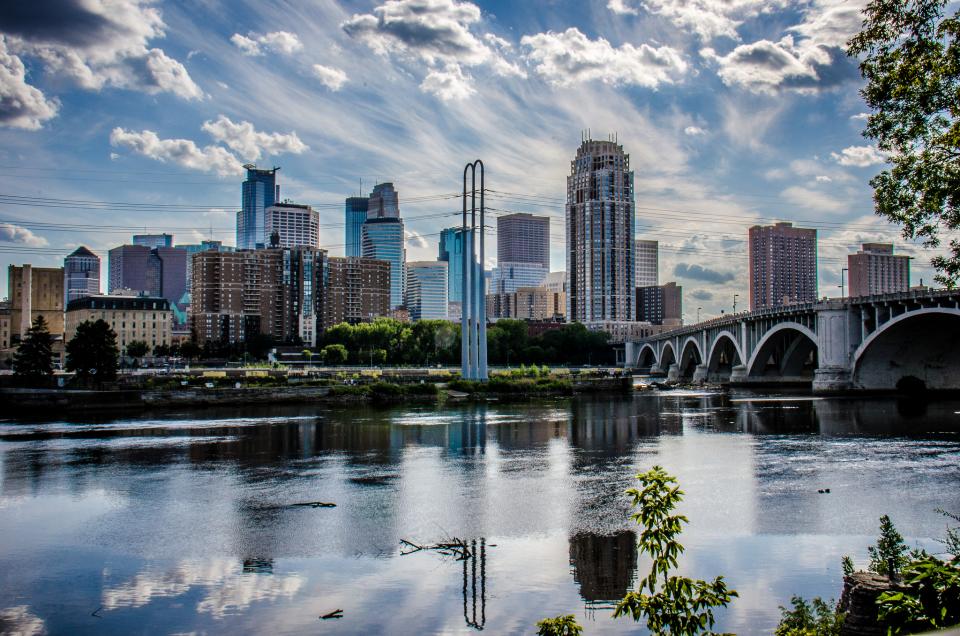Article originally posted on Institute on the Environment website, August 7, 2015, by Monique Dubos
By Monique Dubos
More than half of all people live in cities, a number expected to rise to 60 percent by 2050, according to the United Nations. That means that how we build and manage our urban areas is “one of the most important development challenges of the 21st century,” wrote John Wilmoth, director of the United Nations Population Division, in a recent report.
It’s not surprising, then, that the University of Minnesota has recognized the need to focus on cities in its recently released strategic plan detailing the first of a series of grand challenges it aims to address over the next 10 years: cultivating a sustainable, healthy, secure food system; advancing industry while conserving the environment and addressing climate change; and building vibrant communities that enhance human potential and collective well-being in a diverse and changing world.
Among the tools the University is using to deliver on that commitment is the Resilient Communities Project, an initiative supported by IonE and the Center for Urban Regional Affairs that organizes yearlong partnerships between the University and Minnesota communities, matching hundreds of graduate students to sustainability-related projects identified by the chosen community.
RCP director Mike Greco describes the program and how it is helping build more sustainable cities in this Q&A.
What are some of the biggest challenges RCP teams are tackling?
In these community-scale sustainability and resilience projects, the biggest challenge for students is finding appropriate solutions that align with the community context. Their work may be informed by projects and tools used in other places around the United States and around the world, but they need to consider what’s the right approach locally, taking into account the politics, demographics, development pattern, economy and other conditions that make the community unique. For Rosemount, our most recent RCP partner, students worked on any number of environmentally related projects, on topics such as climate adaption, alternative energy, recreation opportunities for underserved populations, and community gardening. Other projects were focused on neighborhood cohesion, student housing, and fire department staffing. For all of the projects proposed by the community, the overarching goals included fostering resilience in the face of changing conditions and promoting environmental, social and political resilience.
How do transdisciplinary approaches figure into this work?
One unique aspect of RCP is the wide range of expertise we harness across the various classes that we engage to work on community projects. In some cases, multiple courses work on a single project, offering various types of expertise to the community and providing experiential learning opportunities to students from across the U of M. For example, for a project in Rosemount focused on water reuse and conservation, RCP engaged students in an environmental sustainability clinic in the Law School, an environmental health course in the School of Public Health, and an adult education course in the College of Education and Human Development. For a project focused on exploring opportunities for new nature-based recreation and play opportunities, courses included a research and evaluation course in the Recreation, Park and Leisure Studies program, a liberal studies course on re-imaging arts for public parks in the Liberal Studies program, and a course on operations and management in the Environmental Education program at the University of Minnesota Duluth.
What is the impact on students of this kind of practical, hands-on approach?
RCP creates opportunities for students to work on projects that will give them a professional experience in classes that, in many cases, wouldn’t otherwise offer these kinds of experiences. All of the work is happening in close collaboration with our community partner staff and often engages other community stakeholders. This engagement helps ensure that work produced is relevant and has the potential to inform community decisions in the future. For example, one of the projects we did with our first partner, the City of Minnetonka, was about stormwater management. The students’ work influenced the city to reexamine their street sweeping program to improve water quality.
Is there a take-home lesson?
We’re about to embark on our fourth partnership and each has been different, based on the projects we’ve worked on, the staff and community members involved, and the priorities for each community. What’s so interesting is that each community found ways to connect to resilience and sustainability — whether an exurban community like Rosemount or a built-out first ring suburb like North St. Paul. These concepts can be helpful in getting communities to think about the future and the ways that they can shape that future through the decisions that they make now.
Where to next for RCP?
This year’s partnership will be with Carver County. We are excited for this new opportunity, as the county collaboration will include participation by three cities, the community development agency, the school district and the regional transit provider. This coalition will provide opportunities to engage across a variety of projects and jurisdictions.
Monique Dubos is a writer/editor for the Institute on the Environment.
